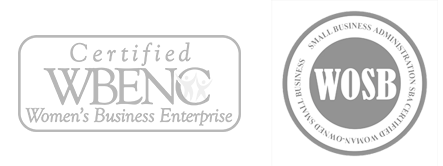WHEN MOST OF US HEAR the phrase “closing techniques,” we immediately think of a pushy car salesman frantically trying to sell us a car — any car — before we leave the lot that day. When selling business to business, you often need to use a more delicate approach to closing. There are dozens of closing techniques, of course, but there are only a few that are effective in business-to-business sales. However, none of these closing techniques are likely to work unless you’ve established a trusting relationship with your prospect, you’ve identified a pain point or need that your products or services can address, and your prospect believes you are offering him a good value. The point of all of these strategies is to guide a prospect toward his best decision, and not to manipulate. With the assumptive-closing technique, you assume your prospect has made the decision to purchase, so your questions focus on future steps. Once you’ve delivered the quote, you might ask, “Does a Friday delivery meet your needs?” or “Should we schedule the kick-off discussion for Monday?” Even though most salespeople would start out by asking how the quote looks, the assumptive closing technique skips that question altogether — and it works. Behaving confidently, as though the sale has already closed, makes it more difficult for a prospect to stall the sale needlessly. Conditional closing techniques overcome objections to expedite closing the sale. Conditional closing involves the exchange principle: If you do something for me, I’ll exchange the favor. If you are selling technology support services, for example, and your prospect is concerned with the 12-month contract, your conditional close might be something like this: “If I can shorten the contract by three months, are you ready to get started right away?” The minor points closing technique involves gaining agreement on small points throughout the sales call to get your prospect in the habit of saying yes. With this technique, the key is asking easy questions that don’t leave room for a negative response. For example, you might ask, “There are three service options. Which do you like best?” You could also ask, “Do you think this option is important?” Using this approach can be effective with a complex sale, when decision-making may overwhelm your prospect. These small, easy decisions will eventually snowball, simplifying the final decision for your prospects, reducing their anxiety, and most importantly, creating a pattern of saying, “yes.” The opportunity cost closing technique emphasizes the cost of delayed decisions. You might ask, “What is the projected loss in revenue from delaying a decision as little as 30 days?” Perhaps the most popular closing technique is the straightforward, rational close. This technique works best with prospects that base their decisions on logic, not emotion. First, you will need to remind the prospect of the needs you both identified. Next, recap how your product or service meets those needs. Once your prospect has agreed to both of those summaries, ask if he is ready to move forward. Identify the closing strategy that is most likely to be effective with your particular prospects, but any closing technique you try needs to feel authentic to you if you’re going to knock your next sale out of the park. Regardless, in the end, even if all you do is ask for the business outright, you are likely miles ahead of most of your competitors.
Recent Posts
- The Confidence Gap: How to Inspire Your Team to Own the Numbers
- Hire, Fire, and Reward Based on Outcomes: The Only Way to Build a Growth Team
- Why Weekly Optimization Separates Winners from Losers
- The Domino Effect: What Happens When You Reposition Your Brand
- Why Leaders Must Demand Accountability for MROI Projections
Related Posts
 Marketing StrategyOtherSales
Marketing StrategyOtherSales
One Team, One Dream
TEAMWORK: every highly successful team gets just how important it is to propelling an organization…
RedRover Sales & MarketingApril 23, 2024
 Marketing StrategyOtherSales
Marketing StrategyOtherSales
Marking Your Territory
I BET you didn’t think your dog could teach you anything about marketing. I’ve learned…
RedRover Sales & MarketingApril 23, 2024
 OtherSales
OtherSales
The Brain Bone’s Attached to the Wallet Bone
LOOKING AT YOUR BRAIN Neuromarketers can predict how you’ll respond to advertising. While it may…
RedRover Sales & MarketingApril 23, 2024




